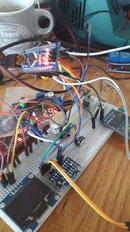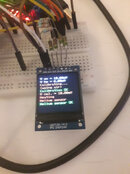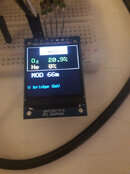ScubaBunga
Contributor
Well ran last night and again today. It does adjust less than 2PPM over an hour but doesn’t change quickly. As to how fast it reacts on a tank, I don’t have one with CO to test, but running while I solder near it, it reacts pretty quick. The sensor is wired with a resistor as the spec calibration is in nanoamps. I started here. Then, like my O2 analyzer, I used an ads1115 and an arduino nano.
At this point even if it is not accurate, I know it reacts. A normal tank shouldn’t show much or nothing. If I get a reading of 5+ PPM, it will be worth questioning the tank. Hopefully, more testing and tweaking over the summer, if the virus lets me get out to dive this year.
At this point even if it is not accurate, I know it reacts. A normal tank shouldn’t show much or nothing. If I get a reading of 5+ PPM, it will be worth questioning the tank. Hopefully, more testing and tweaking over the summer, if the virus lets me get out to dive this year.






